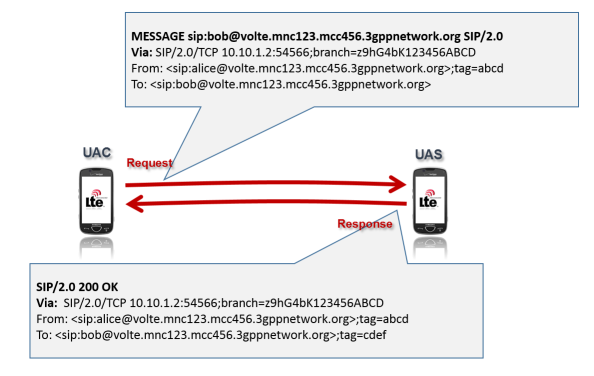In the last post I promised that this time we will take a closer look on SIP headers which are related to routing. SIP routing is very flexible and most of the SIP textbooks are explaining it in a very general way. Here we focus only on routing in IMS context. We should also point out that there are two methods how to route SIP messages – so called strict routing and loose routing. As the strict rooting is obsolete since 2002 and 3GPP mandates only the loose routing for IMS, we will talk just about the loose routing.
The first and the most important header is the Request-Line, which contains the Request-URI. It allows us to route a SIP request directly to a Server. The response then follows the Via header. SIP Client and each proxy which wants to intercept the response adds itself into Via headers of the SIP request. During the processing of the response then each proxy removes its own Via record from the message. The Via header is also used to detect possible loops in signalling.

SIP Request – Response
In practice the UAs can’t see directly one each other and we have to use the IMS network to provide the routing. The first scenario we should go through is the IMS Registration. A VoLTE UE initiates a SIP REGISTER to the P-CSCF, using the P-CSCF IP that was made available during the LTE Attach. The Request-URI is set to the SIP-URI of the domain name of the home network.

